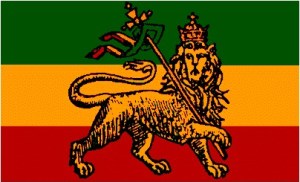There is an interesting article making its way around the interwebs these days telling you to throw away the milk ‘cuz it’s baaad for you ‘cuz lotsa folks got the lactose intolerance.
This is inaccurate and misleading information. It’s really a vegetarian activist and animal rights argument masquerading as a health warning, making use of fake science in an attempt to add credence to a false premise that milk is bad for us. They probably made up their statistics, but only about 10% of Americans are lactose intolerant, though virtually all Chinese and “full-blood” Native Americans are.
In reality there is a fascinating evolutionary story in play here. You see, most humans can only digest lactose (milk sugar) as infants and young children by producing an enzyme called lactase. At a certain age after childhood the gene that promotes lactase production switches off. There is no scientific evidence that this is because milk is bad for the adult human. It’s just generally unnecessary and does not provide any benefit in pre-agricultural societies since their dietary requirements can be met with meats and other resources found in the environment.
Milk consumption was only necessary to keep the child alive long enough to begin eating the bodies of animals rather than from the body of their mother. Since there is apparently not any need or benefit to be able to digest lactose beyond childhood, there was never a need or function for an adaptation that allows humans to produce lactase beyond childhood. It didn’t help us live longer or have more sex in our nomadic hunter-gatherer environment.
That’s just kind of the way evolutionary adaptations work. They typically only serve the function that is needed to keep the individual alive long enough to procreate as often as possible and create as many genetic replications as possible (also called babies).
Probably around 7,000 years ago amongst European and African cattle-herding populations there occurred in an individual a genetic mutation. No big deal; everything that makes any life-form different from a single-celled organism is the result of a genetic mutation. This particular mutation allowed for our bodies to continue producing lactase as adults.
This mutation provided an evolutionary advantage by increasing the “fitness” of the individual so that he lived longer than most others and produced more progeny than those without this mutation. Since they were now herding cattle they had access to milk in proportions unlike you’d find while chasing wild antelope. It is plausible that there may have been food shortages of some sort that helped these milk-drinkers to outlive and outbreed less healthy people without the mutation. It could have just provided for a healthier person in general, without any starvation drama. Regardless, the ability to derive nutrition from more places is an advantage that can increase the evolutionary fitness of the species.
All the numbers disparities and mumbo jumbo of the vegetarians is not so cleverly presented to look like drinking milk is some freakish and “unnatural” thing because most humans do not have the genetic adaptation to produce lactase beyond childhood. In reality, people of European and African descent have a somewhat unique genetic adaptation that allows us to derive nutritional benefit from milk well past our childhood, and this is an evolutionary advantage. Enjoy it.
Note: I will give the author at “I waste so much time” credit for one thing: growth hormones in milk are a genuine concern, but then again harmful chemical additives in our food is a problem even when discussing Brussels sprouts. Let’s not throw the baby out with the bathwater.


